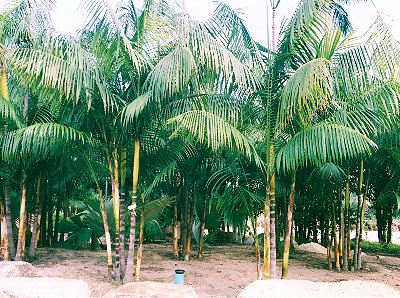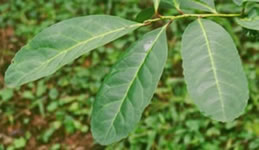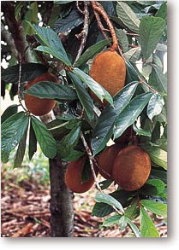
Your Personal Customer Representative is - Fruta Vida Corporate
Fruta Vida International is proud to introduce the taste of the Amazon Rainforest.
Our unique blend of Açai, Cupuaçu and Yerba Mate will delight your taste buds. But that's not all. This vitality drink will also treats consumers to smooth, jitter free energy boost and a veritable feast of antioxidants, anthocyanins and essential vitamins and nutrients.
Enjoy Fruta Vida as a quick shot or add it to a quality meal replacement drink to get one of the best weight loss programs you will find in the market.
Ingredients: Ultra-filtered water, Brazilian juice blend (apple, açai and cupuaçu juice concentrates), yerba mate` tea, natural flavor, potassium sorbate (added to maintain freshness), sodium benzoate and malic acid.
Açai fruit
This delicious dark berry is making a huge buzz because it is packed with natural antioxidants, including vitamin C, vitamin E and special phytonutrients called . In fact, studies show that Açai provides significantly more antioxidants than such well-respected foods as blueberries, oranges and even red wine! Perhaps more impressive is the fact that the antioxidant concentration in the Açaí fruit is five times higher than that of Gingko Biloba, the popular “brain boosting” herbal supplement that is renowned for its antioxidant properties. MORE
Yerba Mate
South America’s “Beverage of the Gods”. It is widely held that this tea contains mateine, a chemical cousin of caffeine that has subtly different properties. Though similar to caffeine in its ability to provide energy, it can have a milder and safer delivery to the body. Yerba maté is also replete with antioxidants that help the body fight free-radicals. MORE
Cupuaçu
When foreigners visit the rainforest, native Amazonians will often offer them Cupuaçu – the “taste of the Amazon”. But this delicious fruit happens to be a potent health resource, as well. It contains unique antioxidant phytonutrients called polyphenols. You may be familiar with polyphenols from other common medicinal plants, notably green tea and grape seeds. MORE
Naturally Teeming with Nutrients!
65 Antioxidants
15 Vitamins - A, C, E, B1, B2, Niacin (B3), B5, B Complex, Biotin, Choline, Inositol
9 Minerals - Calcium, Manganese, Iron, Selenium, Potassium, Magnesium, Silicon, Phosphorus, Sulfur
15 Amino Acids, Omega Fatty Acids (3, 6 & 9), 24 Flavenols, 11Polyphenols, Trace Minerals, Chlorophyll
Each component of our amazing rainforest blend brings a host of nutritional value, tradition and even folk lore
Açai Berry
 For many years the blueberry was thought to be the very best single food source. While blueberrys remain an excellant food and should be added to your diet, there is a new #1 food source - The Açai berry. Açai has been declared the #1 superfood by antiaging guru - Dr. Nicholas Perricone in his best selling books and while on a special guest apperance on 'The Oprah Winfrey' show.
For many years the blueberry was thought to be the very best single food source. While blueberrys remain an excellant food and should be added to your diet, there is a new #1 food source - The Açai berry. Açai has been declared the #1 superfood by antiaging guru - Dr. Nicholas Perricone in his best selling books and while on a special guest apperance on 'The Oprah Winfrey' show.
With 10 times the antioxidants of grapes and twice the antioxidants of blueberries, the Açai berry is clearly the single most powerful food source avialble.
The health benefits are simply amazing.The Açai berry is truly a wonderful fruit. Açai berries grow on an Amazon Palm Tree and have been prized for hundreds of years by Brazilian natives for their ability to provide a sense of strength, energy, and a high nutritional content. This berry is harvested naturally from the depths of the rain forests of Brazil, by the people who have been using it for thousands of years. Açai is the only super food on the market that has everything you need naturally from only the berry itself.
Açai berries are high in essential fatty acids & omegas -- 60% Oleic (omega 9) - a monounsaturated essential fatty acid which helps to lower LDL (harmful cholesterol), while maintaining HDL ( beneficial cholesterol). 12% Linoleic (omega 6) - a polyunsaturated essential fatty acid which has also been found to lower LDL, while maintaining HDL.
Açai also contains many valuable Phytosterols. Sterols are compounds of plant cell membranes providing numerous benefits to the Human body, namely the reduction of blood plasma cholesterol.
The Açai Berry is a dense source of a particular class of flavonoids called anthocyanins.
Anthocyanins are a group of phytochemicals often found in red wine and thought to contribute to the French paradox, i.e. France has one of the lowest incidences of heart disease of any westernized society despite a prevalence of smoking and a diet high in saturated fat and cholesterol.
The Açai berry contains 10-30 times the anthocyanins found in red wine.
Anthocyanins have been found to “exhibit numerous potential therapeutic effects including treatment of diabetic retinopathy and fibrocystic disease of the breast in human”. “Other potential physiological effects of anthocyanins include radiation-protective, chemoprotective, vasoprotective and anti-inflammatory agents”
Açai is packed with Vitamin B1, B2, B3, Vitamin E, Vitamin C, Phosphorus, Calcium, Potassium, Fiber, Proteins, good fatty acids such as Omega 6 and Omega 9. Research on Açai has shown that these antioxidants are known to fight and regulate cholesterol levels in the body.
As an added benefit, Açai gives you the highest level of anti-oxidants on the market, with studies showing up to 33 times the anti-oxidant level as in red wine grapes. Açai can give you the energy from your youth, and open up the vitality and increased stamina you had in your 20's. So try the new "Fountain of Youth" from this incredible Amazon berry!
Besides being considered one of the “richest foods in Iron” the Açai fruit is also rich in fiber which makes it strongly recommended for the elderly and/or for people with digestive problems.
Manifold traditional use
The traditional inhabitants use to call the juice "Açaí-wine". They also use it to make creams and a kind of porridge with manioc meal, banana or fish. The Açaí seed can be used for producing handicraft and a great natural fertilizer. Certain parts of the plant can be burned and produce a smoke that serves as a repellant against mosquitoes and other parasites. The palm hearts from Açaí is widely used for salads, creams, stuffings and is even used for feeding animals. The palm's root is used in the treatment of bleedings and against worms.
Yerba Mate
Yerba Mate, or Mate as it is often called, is a South American herb that has won many admirers in wide-ranging parts of the world. In the search for a natural stimulant devoid of side effects and toxicity, Mate currently holds the most hope. An invigorator of the mind and body, a natural source of nutrition, and a health promoter par excellence, Mate deserves the attention of every person interested in optimum health.
 Mate contains numerous vitamins and minerals. Yerba Maté is basically a stimulant drink, eliminating fatigue, while stimulating mental and physical activity. It has a beneficial effect on nerves and muscles; it also enhances intellectual work.
Mate contains numerous vitamins and minerals. Yerba Maté is basically a stimulant drink, eliminating fatigue, while stimulating mental and physical activity. It has a beneficial effect on nerves and muscles; it also enhances intellectual work.
There are 196 active chemical compounds found in the Yerba Mate plant. Yerba Mate contains 11 polyphenols. Polyphenols are a group of phytochemicals that act as powerful antioxidants and are considered to exhibit anti-cancer effects in mammals by strengthening an organism's natural defenses and protecting it against cellular destruction (i.e. lycopene in tomatoes, flavonoids in blueberries, and isoflavones in soy).
In addition to polyphenols, Yerba Mate leaves contain saponins (In fact, one recent study yielded 3 new saponins in the Yerba Mate leaf!). Saponins are phytochemicals that have been found to specifically stimulate the immune system and aid the body in protecting against disease.
Due to the central stimulant effects of xanthine found in Mate, jointly with the activation of other key substances, the cardiovascular activity strengthens your system. Xanthine also has a well-known effect on the central nervous system, that stimulates mental energy.
Yerba Maté's stimulant action lasts longer than that of caffeine and does not have side effects such as insomnia and irritability.
Yerba Maté - The National Drink Of Argentina...
According to a consumer survey of 6,351 persons between the ages of 12 and 75 in Argentina conducted by IBOPE Argentina during 1999, 92% of Argentine households consume yerba maté.
 Argentines drink yerba maté for several reasons, including increased energy and weight management.
Argentines drink yerba maté for several reasons, including increased energy and weight management.
Do the Argentines know something you don't?
Yerba maté, like coffee and tea, is considered safe by the FDA, and is on their GRAS (Generally Recognized as Safe) list. Consumed is moderation, maté is recognized as one of the most healthful natural beverages on earth!
Yerba Maté Provides a Wealth of Nutrients. Each infusion of Maté contains - Vitamins: A, C, E, B1, B2, Niacin (B3), B5, B... Complex Minerals: Calcium, Manganese, Iron, Selenium, Potassium, Magnesium, Phosphorus, Zinc... Additional Compounds: Carotene, Fatty Acids, Chlorophyll, Flavonols, Polyphenols, Inositol, Trace Minerals, Antioxidants, Tannins, Pantothenic Acid, and 15 Amino Acids.
In addition, results from a study done by researchers at the University of Madrid assert a high content of mineral elements, especially K, Mg, and Mn, in maté. They considered those findings “to be of great relevance” to the nutritional value of maté infusions.
Properties/Actions of Yerba Mate Documented by Research: Anti-inflammatory, Antioxidant, Antispasmodic, Bile Stimulant, Stimulant, Thermogenic (increases fat burning), Vasodilator, Aids In Weight Loss, Induces Mental Clarity.
Diabetic Treatment -Yerba maté has been shown to inhibit the formation of advanced glycation end products (AGEs), with an effect comparable to that of two pharmaceutical grade AGE inhibitor drugs. The formation of AGEs plays a part in the development of diabetic complications.
Fights Bad Breath - Polyphenols found in tea and yerba maté have been shown to prevent both the growth of bacteria responsible for bad breath and the bacteria’s production of odorous compounds.
Aids in Weight Loss - For many years now, physicians in Europe have been incorporating yerba maté in treatments for obesity.
In 2000, a research team studying obesity at the Charlottenlund Medical Center in Denmark, tested an herbal preparation of Yerba Maté, Guarana, and Damiana (YGD) for gastric emptying and subsequent weight loss.
They concluded that the herbal preparation, YGD capsules, significantly delayed gastric emptying, reduced the time to perceived gastric fullness and induced significant weight loss over 45 days in overweight patients treated in a primary health care context. In addition, maintenance treatment given in an uncontrolled context resulted in no further weight loss, nor weight regain in the group as a whole.
Other Properties/Actions of Yerba Mate Documented by Traditional Use: Anti-allergy, antidepressant, appetite suppressant, blood cleanser, cardiotonic (tones, balances, strengthens the heart), central nervous system stimulant, digestive stimulant, hypotensive (lowers blood pressure), nervine (balances/calms nerves), neurasthenic (reduces nerve pain), neuroprotective (protects brain cells), purgative (strong laxative).
From reports of personal experience with mate, its physiological effects are similar to—yet distinct from—more widespread caffeinated beverages like coffee or tea. Users report a mental state of wakefulness, focus and alertness reminiscent of most stimulants, but often remark on mate's unique lack of the negative effects typically created by other such compounds, such as anxiety, diarrhea, "jitteriness," and heart palpitations.
Reasons for mate's unique physiological attributes are beginning to emerge in scientific research. Studies of mate, though very limited, have shown prelimary evidence that the mate xanthine cocktail is different from other plants containing caffeine most significantly in its effects on muscle tissue, as opposed to those on the central nervous system, which are similar to those of other natural stimulants. Mate has been shown to have a relaxing effect on smooth muscle tissue, and a stimulating effect on myocardial (heart) tissue.
Mate's negative effects are anecdotally claimed to be of a lesser degree than those of caffeine, though no explanation for this is offered or even credibly postulated, except for its potential as a placebo effect. Many users report that drinking yerba mate does not prevent them from being able to fall asleep, as is often the case with some more common stimulating beverages, while still enhancing their energy and ability to remain awake at will. However, the net amount of caffeine in one preparation of yerba mate is typically quite high, in large part because the repeated filling of the mate with hot water is able to extract the highly-soluble xanthines extremely effectively. It is for this reason that one mate may be shared among several people and yet produce the desired stimulating effect in all of them.
Cupuaçu - The Taste of Brazil
Cupuacu is a small to medium tree in the Rainforest canopy which belongs to the Chocolate family and can reach up to 20 meters in height. Cupuacu fruit has been a primary food source in the Rainforest for both indigenous tribes and animals alike. The Cupuacu fruit is about the size of a cantaloupe and is highly prized for its creamy exotic tasting pulp. The pulp occupies approximately one-third of the fruit and is used throughout Brazil and Peru to make fresh juice, ice cream, jam and tarts. The fruit ripens in the rainy months from January to April and is considered a culinary delicacy in South American cities where demand outstrips supply.  Like chocolate, the fruit has a large center seed pod filled with "beans", which the Tikuna tribe utilize for abdominal pains.
Like chocolate, the fruit has a large center seed pod filled with "beans", which the Tikuna tribe utilize for abdominal pains.
Cupuacu is found throughout the Rainforest regions with it seeds being dispersed by birds and monkeys which feast on the tasty fruit pulp. Indigenous tribes as well as local communities along the Amazon have cultivated Cupuacu as a primary food source for generations. In remote times, Cupuacu seeds were traded along the Rio Negro and Upper Orinoco rivers where river tribes drink Cupuacu juice after it has been blessed by a shaman to facilitate difficult births.
Indigenous peoples as well as local communities along the Amazon have cultivated Cupuacu as a primary food source for generations. In former times, Cupuacu seeds were traded along the Rio Negro and Upper Orinoco rivers where indigenous people drink Cupuacu juice after it has been blessed by a shaman to facilitate difficult births. The "beans", are utilized by the indigenous Tikuna people for abdominal pains. **
The cupuaçu is an arboreal fruit species considered to be a pre-Colombian crop plantfound wild in the eastern sub region of Brazilian Amazon. Several authors rate it as one of the most promising fruits among the rich Amazonian flora.
Indigenous peoples as well as local communities along the Amazon have cultivated Cupuacu as a primary food source for generations. In former times, Cupuacu seeds were traded along the Amazon rivers, where indigenous people use Cupuacu as a drink and they are utilized the "beans" for abdominal pains.
Analysis of Cupuaçu pulp (Chaar 1980). |
Fatty acid composition as a percent |
||||||||||||||||||||||||||||||||||||||||||||||||||||||||||
|
|
||||||||||||||||||||||||||||||||||||||||||||||||||||||||||
Polyphenols, Phytochemicals, Anthocyanins
 What are they and what are the benefits of such compounds?
What are they and what are the benefits of such compounds?
Phytochemicals characterize, or sum up the whole picture of the beneficial compounds found in fruits, vegetables, and certain teas. They are the protective living matter in which plants are able to thrive in some uncertain environments such as climate and insect infestations.
When consumed by humans, these compounds act as antioxidants so vital to good health and longevity. Many studies suggest that the use of antioxidants may help in the fight against anti-aging, cardiovascular disease, cancer, and so many other age related degenerative diseases including ophthalmology.
Anthocyanins are some of the more potent forms of antioxidants. We have all heard of the "French Paradox", how the people of France with their high fat diets and not uncommon unhealthy lifestyles are still below the percentage of related deaths from cardiovascular disease than many of the populations which exist today. One reason may be that they consume large amounts of red wine. Wine, made from grapes have very high levels of the antioxidant anthocyanins.
 The polyphenols (anthocyanins) in red wine, are believed to mitigate the effects of a fatty diet and smoking. Anthocyanin, a polyphenol which is proven to reverse, halt, and improve the conditions of many age related diseases inflicted on the general population. Anthocyanins (flavonoids) found in various fruits have a unique chemical structure that makes them 6 to 8 times more potent than vitamin C.
The polyphenols (anthocyanins) in red wine, are believed to mitigate the effects of a fatty diet and smoking. Anthocyanin, a polyphenol which is proven to reverse, halt, and improve the conditions of many age related diseases inflicted on the general population. Anthocyanins (flavonoids) found in various fruits have a unique chemical structure that makes them 6 to 8 times more potent than vitamin C.
One particular fruit, known as Acai (ah-sigh-ee) contains the most highly concentrated forms of anthocyanins known thus far through intense research. The anthocyanin content in the Acai is proven to be 3.5 times the amount of that present in a glass of red wine, volume to volume when tested in an ORAL analysis (measure of capacity).
Anthocyanins and their protective properties:
Inflammation and Collagen: Anthocyanins neutralize enzymes that destroy connective tissue. Their antioxidant capacity prevents oxidants from damaging connective tissues and repair damaged proteins in the blood-vessel walls.
The Nervous System: By preventing tyrosine nitration, the anthocyanin properties in Acai may help protect against neurological diseases. The primary anthocyanins in Acai known as Cyanidin-3-glucoside have been found to help in the reversal of age related neurological deficits.
Large and Small Blood-Vessels: Anthocyanins ability to counter oxidants make them a powerhouse in the fight against arteriosclerosis. Even in trace amounts, anthocyanins effectively protect against LDL oxidation. Anthocyanins protect the integrity of the endothelial cells that line blood vessel walls and help to maintain micro capillary integrity. Diabetes: One of the serious diabetic complications is retinopathy, which in most cases can cause blindness. This condition occurs when the body attempts to repair leaking, damaged capillaries, but does so by over producing abnormal proteins. The protection of anthocyanins may help prevent these capillaries from leaking and to help prevent abnormal protein proliferation.
Eyesight: Anthocyanins may also help improve eyesight by numerous mechanisms. In the Second World War, British fighter pilots were found to have improved night vision. These findings were thought to be contributed by the large amounts of bilberry in the pilot's diet. The effects of the improved night vision were not long lasting after the initial consumption of bilberry lasting just hours after initial consumption. With this new found advantage, the pilots would consume the bilberry fruits just prior to the mission.
*Information on this site is for educational purposes only. It is not intended to act as a substitute for medical advice provided by a qualified health care provider nor is any information in this site intended to diagnose, treat, cure or prevent any disease. Statements have not been evaluated by the Food and Drug Administration.- References



